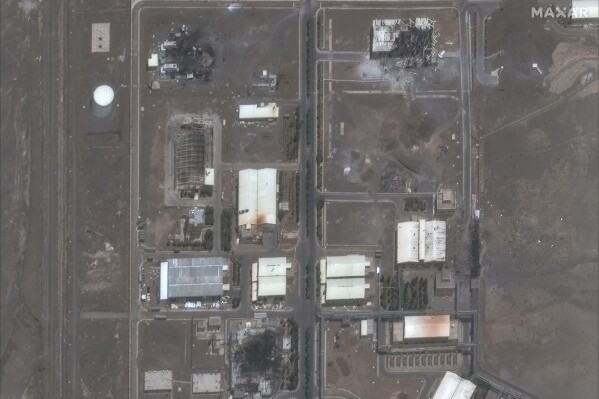June 17, 2025 | BlogHear.com
The head of the International Atomic Energy Agency (IAEA), Rafael Grossi, has confirmed that no additional damage has occurred at Iran’s Natanz uranium enrichment plant since the Israeli airstrikes on Friday, June 13, 2025. Grossi provided a detailed update to the IAEA’s board of governors on Monday, outlining the extent of damage to Iran’s nuclear facilities amid escalating regional tensions.
Damage Confirmed at Natanz and Isfahan
According to Grossi, the above-ground Pilot Fuel Enrichment Plant (PFEP) at Natanz was destroyed in the attack. This facility housed cascades of centrifuges enriching uranium up to 60% purity—significantly close to the 90% threshold required for weapons-grade uranium. Critical electrical infrastructure, including a sub-station, power supply buildings, and emergency generators, were also reported destroyed.
However, Grossi stressed that no physical damage was detected at the underground cascade hall of Natanz, which contains part of the PFEP and the main Fuel Enrichment Plant. The loss of power to this hall may have caused damage to centrifuges inside, but radiation levels outside the site remain normal.
At the Isfahan Nuclear Technology Centre, four buildings suffered damage, including the central chemical laboratory, a uranium conversion plant, a reactor fuel manufacturing plant, and a facility converting uranium hexafluoride to uranium metal. Despite the damage, radiation levels off-site remained unchanged.
Conflicting Claims Over Fordo Site
Israel has accused Iran of weaponizing its uranium stockpiles and has targeted multiple nuclear sites as part of its campaign to prevent Iran from developing nuclear weapons. Israel’s military reported that nine Iranian nuclear scientists were killed in the strikes.
Iran’s semi-official Isna news agency reported “limited damage” at the Fordo enrichment site after the attacks, although Israel has not confirmed any strike there. The IAEA’s Grossi said no damage was observed at Fordo or at the nearby Khondab heavy water reactor, which is still under construction.
Calls for Restraint Amid Escalation
Grossi warned all parties to exercise maximum restraint, emphasizing that continued military escalation could risk radiological release with serious consequences for human health and the environment.
Iranian Foreign Minister Abbas Araghchi condemned the Israeli strikes as a “blatant violation of international law” and called on the IAEA board to issue a strong condemnation of the attacks. He characterized Iran’s missile strikes on Israel since Friday as a legitimate “response to aggression.”
Ongoing Conflict and Casualties
The Israeli military confirmed that its air campaign would continue with the goal of neutralizing what it views as an existential threat from Iran’s nuclear program and missile capabilities. Iranian health officials reported over 220 deaths from the Israeli strikes since Friday, while Israel says 24 civilians have been killed in retaliatory Iranian missile attacks.
Nuclear Deal Breaches and International Context
The escalation follows the IAEA board’s formal declaration last Thursday that Iran is in breach of its nuclear non-proliferation obligations for the first time in two decades. Iran’s failure to provide full transparency about undeclared nuclear materials and activities was cited as non-compliance.
Under the 2015 Joint Comprehensive Plan of Action (JCPOA), Iran was restricted to enriching uranium at no more than 3.67% purity and prohibited from enriching uranium at Fordo for 15 years. However, after the U.S. withdrew from the deal in 2018 under President Donald Trump and reinstated sanctions, Iran resumed and expanded uranium enrichment activities, including enrichment at Fordo since 2021.
The IAEA reports that Iran now has enough uranium enriched up to 60% to potentially manufacture nine nuclear weapons, intensifying international concerns over the program’s direction.
For ongoing coverage of the Iran-Israel conflict and nuclear developments, visit BlogHear.com.




